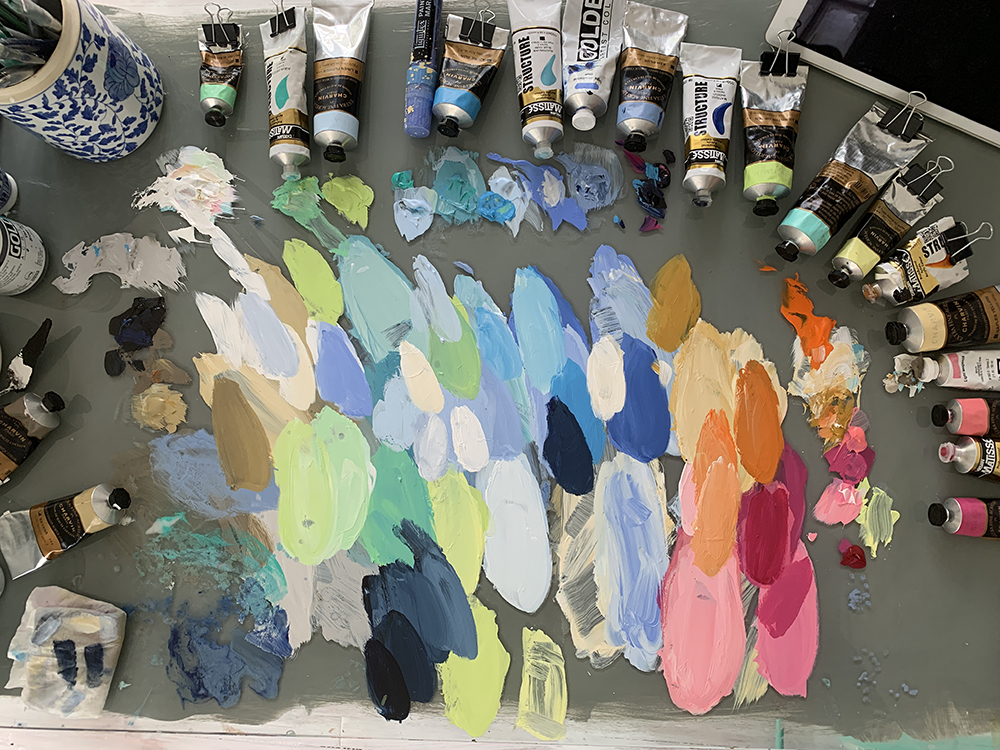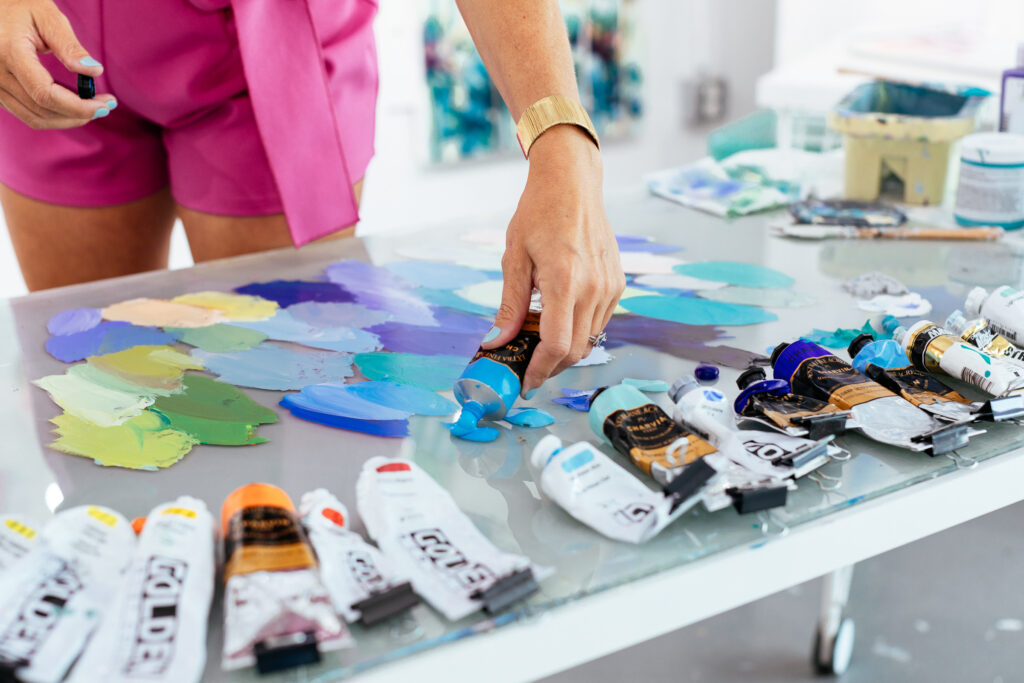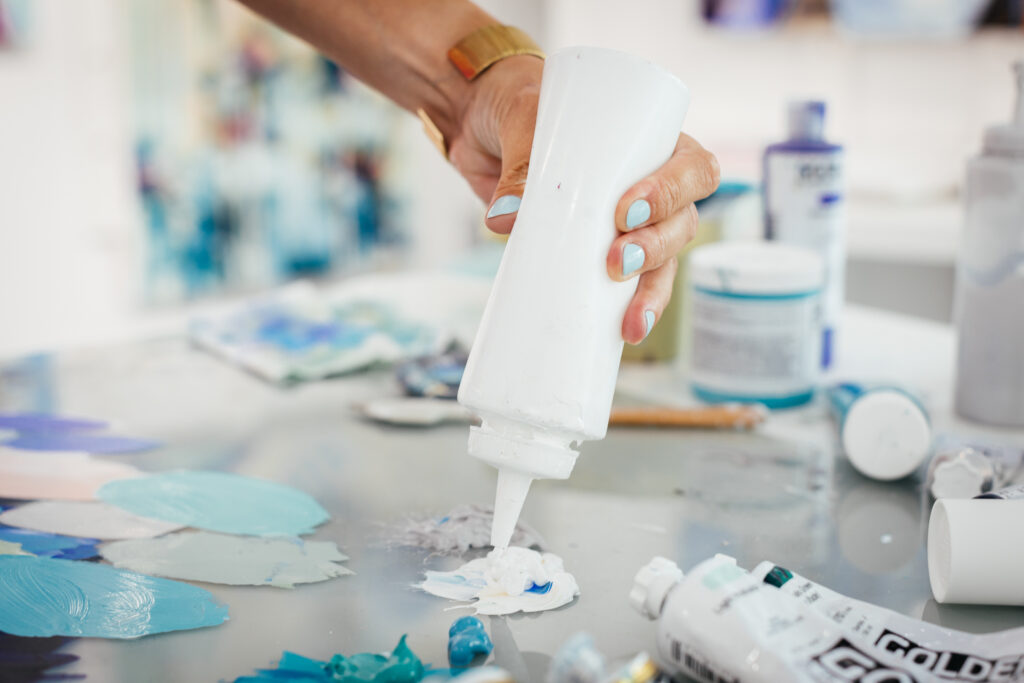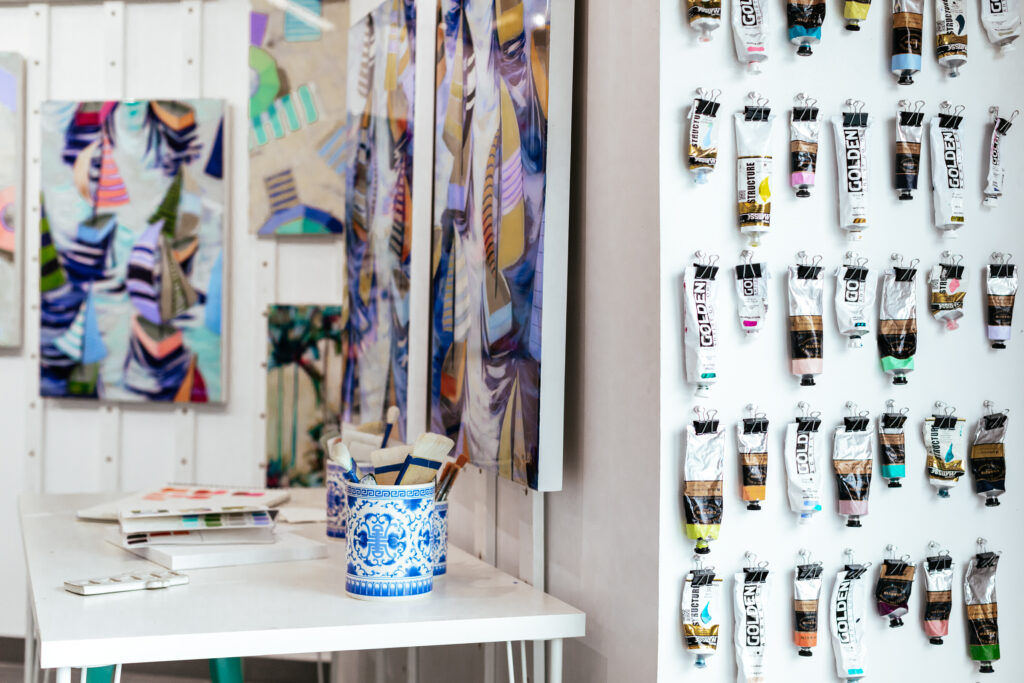
Introduction
Hey there! If you’re ready to get back into art, you’ve come to the right place. Whether you’re finally enjoying some quiet time or just want to explore a new hobby, acrylic paints are a great way to dive in. They’re easy to work with and don’t require a lot of fuss, making them perfect for beginners. So, settle in with a cup of tea (or coffee, or whatever you prefer), and let’s explore how these versatile paints can spark your creativity.
Overview of Acrylic Paints
First things first, what exactly are acrylic paints? Simply put, they’re a type of paint made from pigment suspended in an acrylic polymer emulsion. You can use them on pretty much any surface, and they’re great for both detailed work and broader strokes. Sounds fancy, but all you need to know is that they’re water-based, quick-drying, and super forgiving for beginners. Whether you’re painting a serene landscape, a quirky portrait, or just having fun with abstract shapes, acrylics have got you covered.
Why Acrylic Paints are Great for Beginners

They’re kind of like the reliable friend who’s always up for anything. They’re easy to work with, dry quickly (which means less waiting and more creating), and are incredibly versatile. You can layer them, blend them, and even dilute them with water for different effects. Plus, they’re pretty affordable, so you won’t have to break the bank to get started.
Understanding Acrylic Paints
Alright, let’s break it down:
- Different Types of Acrylic Paints: Acrylic paints come in several varieties, each with its own unique characteristics. Heavy Body: Thick and great for texture. Soft Body: Smooth and good for detailed work. Fluid: Thin, perfect for glazing and fine lines. High Flow: Very fluid, ideal for airbrushing or drawing.
- Properties and Characteristics: Acrylic paints are celebrated for their vibrant colors and versatility. They can be thinned with water to create washes resembling watercolors, or applied thickly like oils. One of their standout features is their quick drying time, which can be both a blessing and a curse. It allows for rapid layering and overpainting, but it also means you have to work quickly. Acrylics are also permanent once dry, water-resistant, and can adhere to a variety of surfaces including canvas, paper, wood, fabric, and even glass.
- Best Materials to Use with Acrylic Paints: While you can paint on almost anything with acrylics, some materials work better than others. Canvas is the most popular surface, available in stretched, canvas boards, or pads. It’s durable and provides a nice texture. Acrylic paper is another excellent option, designed to handle the paint’s moisture and weight. For a smoother surface, you might choose wood panels or MDF boards, which are great for detailed work and can be easily primed. Don’t forget your brushes! Acrylic brushes are typically made of synthetic fibers that withstand the paint’s drying properties and offer a variety of shapes and sizes for different techniques.
Acrylic Paint Clean Up and Care Tips

To keep your paints and brushes in good shape, store your paints in a cool, dry place and make sure the caps are tightly sealed. Acrylics last quite a while if stored properly. Keep your palette moist with a stay-wet palette or a light spray of water, and clean your brushes right after use with lukewarm water and mild soap.
- How to Store Acrylic Paints: To extend the life of your paints, store them in a cool, dry place, away from direct sunlight. Make sure the lids are tightly sealed to prevent the paint from drying out. You can also store tubes upside down to help keep the paint near the cap and reduce air exposure.
- How Long Do Acrylic Paints Last Once Opened?: When stored properly, opened acrylic paints can last anywhere from 5 to 7 years. Signs that your paint has gone bad include a foul odor, separation of the binder and pigment that doesn’t mix back together, or a chunky, unusable texture.
- How to Prevent Acrylic Paints from Drying Out: Acrylics dry quickly, which is great when you’re working but can be frustrating if they dry out on your palette. To keep your paints moist, consider using a stay-wet palette, which maintains a moist environment for your paints. You can also lightly mist your palette with water using a spray bottle or add a few drops of water directly to the paint.
- How to Refresh Acrylic Paints: If you find your paints starting to dry out, you can sometimes revive them by adding a bit of water or an acrylic medium and mixing thoroughly. For more details on refreshing your paints, check out this handy guide.
- How to Clean Up: Cleaning up after a painting session is crucial to maintain your tools. Acrylic paint dries fast and can be tough to remove once dry, so clean your brushes and tools immediately after use. Use lukewarm water and mild soap, gently working the bristles to remove all paint. For dried paint, you might need to use a brush cleaner or conditioner to restore your brushes.
Acrylic Paint Safety Tips
- Most acrylic paints are non-toxic, but it’s a good idea to check the labels.
- Are Acrylic Paints Flammable?: Acrylic paints are not flammable. They are water-based, which makes them a safer option compared to oil paints that use flammable solvents.
- Are Acrylic Paints Safe for Skin?: While acrylics are not highly toxic, they are not intended for use on the skin. They can cause irritation, and once dried, they form a plastic-like layer that can be difficult to remove. If you get paint on your skin, wash it off with soap and water promptly.
Best Acrylic Paints

We recommend professional grade paints, such as Golden Acrylic Paints, because it will be so much easier to mix which will lead to less wasted paint, more saturated colors, and you’ll wind up using a lot less paint to get the coverage you need. However, student-grade paints like Liquitex Basics or Winsor & Newton Galeria are a good start.
Basic Techniques for Acrylic Painting
Now that you’re all set up, let’s dive into some fundamental techniques to get you started:
- Wet-on-Wet Technique: This technique involves applying wet paint onto a wet surface, which allows for smooth blending and soft transitions between colors. It’s great for creating backgrounds or atmospheric effects. Start by lightly misting your canvas with water or a medium, then apply your paints directly onto the damp surface and blend as desired.
- Dry Brushing: Dry brushing uses very little paint on a dry brush to create rough, textured strokes. This technique is perfect for adding highlights, details, or a sense of movement to your painting. Load a small amount of paint on your brush, dab off the excess on a paper towel, and lightly drag the brush across your canvas.
- Glazing and Layering: Glazing involves applying thin, transparent layers of paint over dry layers to create depth and luminosity. Mix your paint with an acrylic glazing medium to achieve the desired transparency, and apply in smooth, even strokes. Layering is similar but uses opaque or semi-opaque colors to build up texture and complexity.
- Texturing: Adding texture to your paintings can make them more dynamic and interesting. You can use tools like palette knives, sponges, or even household items like old credit cards to apply and manipulate the paint. Experiment with different tools and techniques to see what effects you can create.
For more in-depth information on brush strokes and other techniques, check out this post.
TL;DR [Conclusion]
Acrylic paints are an excellent choice for anyone returning to art. They’re versatile, easy to use, and perfect for a wide range of techniques. So, grab your brushes and start painting—your inner artist is waiting to be unleashed!
Catch you in the studio!
COMMENTS